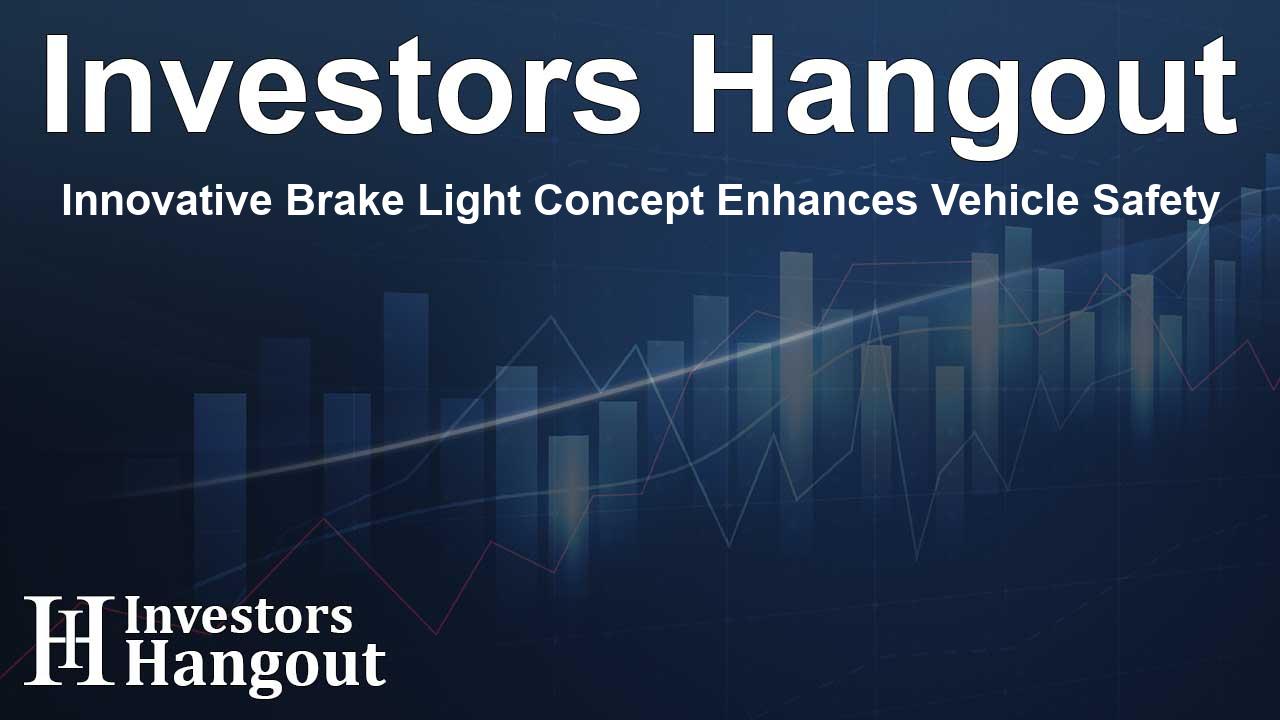Innovative Brake Light Concept Enhances Vehicle Safety

Innovative Brake Light Concept Enhances Vehicle Safety
In today’s fast-paced world, vehicle safety remains a top concern for drivers. An inventor has come up with a groundbreaking idea aimed at enhancing safety on the roads. The invention, known as the P. I. L. PRESSURE INTENSITY LIGHT, is designed to provide a vital piece of information to following motorists: how hard the driver is pressing the brake pedal.
Enhancing Awareness with Brake Light Technology
The P. I. L. PRESSURE INTENSITY LIGHT functions as a third rear brake light that visually indicates the pressure applied to the brake pedal. This means that drivers behind will receive a clear signal about the stopping intentions of the vehicle ahead. The thoughtful design aims to improve reaction times, allowing for safer driving distances and reducing the risk of rear-end collisions.
Functionality that Promotes Loss Prevention
The essence of this invention lies in its simplicity and effectiveness. By adapting brake light signals to indicate intensity, it promotes safe vehicle following distances, particularly in heavy traffic scenarios. Motorists can adjust their speed based on visual cues rather than just anticipating a stop, significantly enhancing roadway safety.
Details on Availability and Licensing
Currently, the patent-pending invention is being presented to manufacturers and marketers for licensing or potential sale. This offers a unique opportunity for businesses interested in pioneering technology that addresses an ongoing issue in road safety. A prototype of this innovative brake light is also available, along with technical drawings, to interested parties.
Contact Information for Interested Parties
Individuals or companies wishing to explore this new technology can reach out for more details. They can contact the InventHelp team at their Pittsburgh office, as they manage inquiries regarding this inventive solution. For those looking to invest in automotive safety technology, this could be a promising venture to consider.
Frequently Asked Questions
What is the P. I. L. PRESSURE INTENSITY LIGHT?
The P. I. L. PRESSURE INTENSITY LIGHT is a third brake light that indicates how hard the brake pedal is being pressed, enhancing road safety.
How does this brake light work?
This innovation changes the light signals based on the brake pressure, providing motorists with crucial information for better reaction times.
Where can I learn more about licensing this invention?
For licensing details, you can contact InventHelp directly at their Pittsburgh office.
Is there a prototype available?
Yes, a prototype and technical drawings are available upon request for those interested in the invention.
What safety benefits does this invention provide?
This invention helps prevent rear-end collisions by allowing following drivers to maintain safer distances based on clear brake light indicators.
About The Author
Contact Riley Hayes privately here. Or send an email with ATTN: Riley Hayes as the subject to contact@investorshangout.com.
About Investors Hangout
Investors Hangout is a leading online stock forum for financial discussion and learning, offering a wide range of free tools and resources. It draws in traders of all levels, who exchange market knowledge, investigate trading tactics, and keep an eye on industry developments in real time. Featuring financial articles, stock message boards, quotes, charts, company profiles, and live news updates. Through cooperative learning and a wealth of informational resources, it helps users from novices creating their first portfolios to experts honing their techniques. Join Investors Hangout today: https://investorshangout.com/
The content of this article is based on factual, publicly available information and does not represent legal, financial, or investment advice. Investors Hangout does not offer financial advice, and the author is not a licensed financial advisor. Consult a qualified advisor before making any financial or investment decisions based on this article. This article should not be considered advice to purchase, sell, or hold any securities or other investments. If any of the material provided here is inaccurate, please contact us for corrections.
